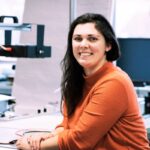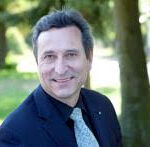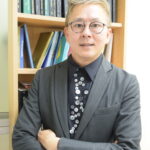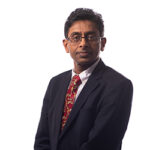Parallel Session 5: Sustainability in research – the Leading Role and Responsibility of Higher Education Institutions (Hybrid)
Tuesday 10 October 202316:15 – 17:25
Augustiner Kloster
Sustainable Futures: Global Trends and the Role and Responsibility of Technology Universities
Sub-themes in focus – sharing global perspectives: Sustainability in research – the Leading Role and Responsibility of Higher Education Institutions
What: Round Table Discussion: Parallel Session
Overview: In these sessions we will explore the sub-themes for the Congress through a range of short presentations leading into round table discussions.
Each parallel session will have a Chair to facilitate the discussion and we hope the conversations might spark areas for future WTUN collaboration and workstream developments
Chair: Prof PB Anand, Professor of Public Policy and Sustainable Development, Head of the Department of Peace Studies And International Development (PSID), University of Bradford
Speakers:
- Prof Dieter Bryniok, Former Vice President Research and Transfer, Hamm-Lipstadt University of Applied Sciences, Retired (WTUN Honorary Fellow).
- Assoc Prof Dr Samak Kaewsuksaeng, Vice President for Research and Innovation, Thaksin University
- Dr Christina Toigo, Professor for Hydrogen Technology, University of Applied Sciences Upper Austria
- Dr. Neung Teaumroong, Acting Vice Rector for Research and Technology Development Suranaree University of Technology
Prof Dieter Bryniok
‘Why@Volta: A joint project of two WTUN members addressing SDGs 7, 13, 14, and 15’
The water hyacinth (Eichhornia crassipes) was originally native to the Amazon region and has spread to tropical Africa and Asia as an extremely problematic invasive aquatic plant. It grows up to 1 metre high above the water surface, reducing the incidence of light and the oxygen concentration in the water and thus reducing the fish population.
It affects fisheries, navigation, hydropower generation, water quality, public health and social life in Ghana and much of West Africa. The covered water area and biomass double every 2-3 weeks.
With this background, we launched the project “Localization, Quantification and Exploitation of Water Hyacinths in the Volta River on the Basis of Remote Sensing Data (WHy@Volta)”.
Our long-term goal is to combat the water hyacinth invasion, produce biogas from water hyacinths, meet the energy demand of settlements along the Volta River and thus improve the quality of life of local residents.
In this project, we wanted to lay the foundations for this and assess the feasibility.
The basis for the project was laid by the colleagues at Koforidua Technical University, who developed a method for locating water hyacinths on water surfaces using satellite data from various sensors.
In the Why@Volta project,
– water hyacinths in our investigation area were localised via satellite data and with the help of drone flights and high-resolution photos,
the area covered by water hyacinths in the investigation area was estimated at 15 km2, and 62 km2 in the entire lower course of the Volta River,
– the biomass per covered area was determined to be 21.5 kg/m2.,
– the specific methane yield from water hyacinth biomass was determined to 190 m3/t using a method from Hamm-Lippstadt University of Applied Sciences,
– the electricity that can be generated in CHPs with the biogas from the water hyacinth biomass in the investigation area was calculated to be 145,800 MWh,
– the energy potential of the water hyacinth biomass that can be harvested per day (7.5 t) or in one year (5,400 t) was determined,
– and compared with the energy demand of eight municipalities (over all, about 45,300 MWhel)
– first reactor concepts were developed,
– two Ghanaian and two German potential industrial partners were identified.
In summary, we have determined in the project that the energy demand in the eight settlements can be met by far by the water hyacinths in the study area. However, in addition to the two existing floating harvesters, another 16 would have to be procured.
For this project we received the German-African Innovation Incentive Award GAIIA.
Dieter Bryniok1 and Richard Artur2
1 formerly Hamm Lippstadt University of Applied Sciences
2 Koforidua Technical University
Assoc Prof Dr Samak Kaewsuksaeng
Tiptiwa Sampantamit1,4* Noppamas Pukkhem 1,4 Naphat Keawpibal 1,4 Siraya Sitthisarn 1,4 Apinan Aueaungkul2,4 Sanit Srichookiat2,4 Pornpan Khemakhunasai3,4 Auttapong Pinthongpan4 Samak Kaewsuksaeng 5 and Nathapong Chitniratna3
‘Sustainable innovation for alleviation for poverty in Phathalung, Thailand’
Poverty eradication has been a crucial challenging issue in all countries around the world for several decades. This research study thus applied a participatory process to appropriately drive spatial development and solve poverty problems using the “Phatthalung Model” which consists of significant processes, which are 1) creating a collaborative mechanism to solve the poverty problems at spatial and provincial levels through the mechanism of Phatthalung Sustainable Poverty Eradication and Lifelong Learning Development based on Sufficient Economy Philosophy Center, including government organizations, private organizations, civil society, public sectors, and university in the area, 2) developing poor household searching and rechecking system in eleven districts, 3) analyzing levels of livelihood capitals and sending to assistance system helping the poor in the whole province, and 4) developing an operating model to solve poverty problems appropriately with the target group and consistently with context and ecology in the area in developing occupation skills and increasing life skills for poverty eradication. The findings of this study revealed that there were 14,212 poor households with a total of 59,495 poor people. In terms of livelihood capital, in Phatthalung province, human capital was at 1.85 (difficult to live), physical capital was at 2.77 (livable), economic capital was at 2.20 (difficult to live), natural resource capital was at 2.72 (livable), and social capital was at 1.53 (very difficult to live), which was passed to the government organization for more assistance about accommodation maintenance, helping the elderly, bedridden patients, and disabled in 9,597 households.
According to the analysis and synthesis of data about poor households developing a pilot operating model to solve the poverty problem in the area of Thalei Noi Sub-district, Kuan Kanoon district, using local wisdom about Krajood and community identity, including knowledge of science, technology, research, and innovation, the operating model of “Krajood” and adding the poor into pro-poor value chain need to encourage them to participate in developing learning process model to develop occupation skills and improve life skills to have more job and income and finally extend to occupational development and increase the income of the poor. This has improved the quality of self-reliance by coaching from strong community enterprises (Krajood Wannee) integrated with the knowledge of the arts, design and implementation of intellectual property of Thaksin university. Also, developing human capital through theoretical and practical training leads to incremental economic capital and generates more than 30 percent of income plus increases natural capital by creating a prototype Krajood plot which cooperates with the Phatthalung Agricultural Research and Development Center. This consequences to the rise of the living capital base: human capital, economic capital, social capital and natural capital. It was also found that social return on investment (SROI) in the process had a SROI of 3.18, which interpreted as every investment of Baht in the research project will receive a return equal to 3.18 Baht. For the discounted payback period, it was found that the investment in this research project could pay back within 1.7 years or approximately 1 year 8 months
1Faculty of Science, Thaksin University, Phatthalung, 93210, Thailand
2Faculty of Economics and Business Administration, Thaksin University, Songkhla, 90000, Thailand
3Faculty of Humanities and Social Sciences, Thaksin University, Songkhla, 90000, Thailand
4Research and Innovation Center for Provincial Poverty Alleviation in Phatthalung, 93210, Thailand
5Faculty of Technology and Community Development, Thaksin University, Phatthalung, 93210, Thailand
Keywords: Phatthalung Model, livelihood potential, poverty alleviation operating model, social innovation
Dr Christina Toigo
‘Empowering the Future: Connecting Students with cutting-edge Hydrogen and Energy Storage Research’
Within this presentation, we will delve into the crucial role of Higher Education Institutions in fostering sustainability through research with a special focus on hydrogen technology and energy storage. By highlighting the significance of directly involving students with latest research infrastructure and ongoing research projects, we aim to illuminate the transformative potential of this activities.
Dr. Neung Teaumroong
‘SUT’s Centers of Excellence: Pioneering Sustainable Research and Innovation for a Better Future’
As a technology university, SUT prioritizes sustainability research through its ten centers of excellence, addressing various sustainability challenges. The university aligns research efforts with the UN SDGs, contributing to goals like clean energy and sustainable infrastructure, through the CoE in High Energy Physics and Astrophysics and the CoE in Innovation for Sustainable Infrastructure Development. SUT also encourages collaboration between various disciplines, fostering interdisciplinary research approaches. The CoE in Biomechanics Medicine, CoE in Biomass and CoE in Microbial Technology for Agricultural Industry, exemplify this by integrating expertise from different fields to address health, agricultural and environmental challenges. In terms of sustainable technology development, the CoE in Electromagnetic Wave Application and the CoE in Advanced Functional Materials are instrumental in developing sustainable technologies. These innovations have the potential to transform industries and contribute to sustainable development. SUT closely collaborates with industries and local communities to conduct research that meets real-world needs. For instance, the CoE in Technology and Innovation for Korat Chicken Business Development and the CoE in Agricultural Product Innovation exemplify this by addressing agricultural challenges and promoting sustainable practices in the agricultural industry. SUT also plays a vital role in nurturing future sustainable enterprises. The CoE in Entrepreneurship fosters entrepreneurial mindsets and equips students to develop sustainable business ventures and enterprises. SUT’s research also influences policy formulation for environmental conservation and economic development, furthering the institution’s commitment to sustainability.
Promoting Interdisciplinary Research: Institutions foster interdisciplinary collaborations to tackle complex sustainability issues. By bringing together experts from diverse fields such as science, engineering, social sciences, and humanities, they can develop holistic solutions.
Knowledge Creation and Dissemination: Universities are hubs of knowledge creation. They publish research findings in academic journals and present them at conferences, ensuring that valuable sustainability knowledge is shared with the global research community.
Technology and Innovation: Higher education institutions are at the forefront of technological advancements. They develop and apply innovative technologies to address sustainability challenges, such as clean energy technologies and sustainable agriculture practices.
Encouraging Student Engagement: Universities encourage students to engage in sustainability research. This can include research projects, theses, and participation in sustainability-focused organizations, providing hands-on experience and promoting future sustainability leaders.
Collaborating with Industry and Government: Institutions collaborate with industry and government agencies to conduct joint research projects. This enables research findings to be translated into real-world applications and policies for sustainability.
Supporting Sustainable Development Goals (SDGs): Higher education institutions align their research efforts with the United Nations SDGs. They actively contribute to achieving these global goals through research projects that address specific targets and indicators.
Integrating Sustainability into the Curriculum: Institutions integrate sustainability principles into various academic programs to educate and raise awareness among students and faculty about the importance of sustainable practices and research.
Leading by Example: Universities take the lead in adopting sustainable practices on their campuses. From energy-efficient buildings to waste reduction initiatives, they set an example for students and the broader community.
Community Engagement: Higher education institutions actively engage with local communities to understand their sustainability needs. They collaborate on research projects that have a positive impact on local development and address community-specific challenges.
By embracing these roles and responsibilities, higher education institutions contribute significantly to advancing sustainability and shaping a more sustainable future for society and the planet.

 Assoc. Prof. Dr. Samak Kaewsuksaeng
Assoc. Prof. Dr. Samak Kaewsuksaeng Dr Christina Toigo
Dr Christina Toigo Prof. Dr. Dieter Bryniok
Prof. Dr. Dieter Bryniok Prof. Dr. Neung Teaumroong
Prof. Dr. Neung Teaumroong Professor Prathivadi Anand
Professor Prathivadi Anand